Eric Gibson
master brummie
Reminds me of the greengrocer queue during the war when there was a rumour that he had some oranges or bananas. 
Once upon a time there stood a busy little pub on the corner of Emily Street and Dymoke Street called the Emily Arms. One day the local Council decided it was time they did something about the number of back to back slum housing in the area. So in the mid 1930’s they started demolishing the houses in a five and a half acre area around the pub.
The flats were completed by 1939 and officially opened by King George VI and Queen Elizabeth. It wasn’t long before it became evident that these flats were just further slums but on top of each other as opposed to back to back though the Emily Arms still remained a busy little house.
Within 50 years the Council decided that these flats just had to go, and because the Emily Arms got in the way of their new design it was decided to move it across the road to a new building which can be seen on the right-hand side of the “now” image. Unfortunately, new replacement pubs rarely have the same atmosphere as the ones they replace and after a few short years and the obligatory change of name (The Hideaway) for failing pubs it closed and became a community centre.
View attachment 134892


I have never seen the older picture, really interesting. I lived in Antrobus Road late 60s to late 80s which is just 100 yards behind where the photographer would be.
Suffolk Street in 1953. Only the large white building in the top centre remains today.
View attachment 154724
The small white car seen in the 1953 view would probably be strange to drive in today's traffic.
View attachment 154725
The white building looks quite modern in the second photo. If someone had asked me to say when it was built I wouldn't have said pre 1950s
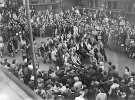
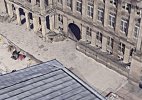
I had a Bond Minicar, it had some sort of small electronic box to do with reverse,I did wonder if it was a Bond Minicar. They were a strange little car, you had to lift the bonnet up and kick start the engine. The whole engine swung with the steering and it could turn on the spot.
I supposed they were popular because you could drive one with a motorbike licence.
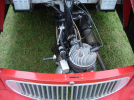
It was given a facelift quite recently. I think it's been converted to student accommodation.The white building looks quite modern in the second photo. If someone had asked me to say when it was built I wouldn't have said pre 1950s
Looks like they could have been doing The Lambeth Walk.I remember a time in 1945 when council staff danced outside the Council House.
View attachment 154752
Don't think we will ever see such scenes again.
View attachment 154754
info about 'then' in https://birminghamhistory.co.uk/for...ught-in-our-old-street-pics.41947/post-661939
Was the off licence on the the corner? I seem to recall one with a black and white signage saying .........Wine store or wine shop.Used to live quite near there. I think it was close to a house that was at one time a wool shop, and at another time an off-license.
I think it was on a corner, yes, come to think of it.Was the off licence on the the corner? I seem to recall one with a black and white signage saying .........Wine store or wine shop.
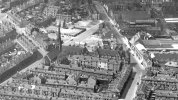
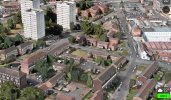
In my opinion, how much nicer the area looked when the church was there. I used to be on the back of an old Ariel motorbike, tearing my way through Hockley at 35 mph, on my way to Sea Cadets, "T/S: VERNON" at the resevoir., that was in 1952.An aerial view from Hockley dated 1950. Bridge St West runs diagonally from bottom left and Farm St from bottom changing direction where Villa St crosses it. A school and a church in the view.
View attachment 157088
image source 'britainfromabove'
The church and the school sites now have houses on them. The building on the far corner of Villa St/Farm St looks to have been there in 1950.
View attachment 157089
I know the feeling Gerry. I used to live in Villa Street, next door to the cafe on the corner of Villa Street & Nursery Road. The area was so much better then, compared to now. If my memory serves me well, wasn't the church St Michael's.In my opinion, how much nicer the area looked when the church was there. I used to be on the back of an old Ariel motorbike, tearing my way through Hockley at 35 mph, on my way to Sea Cadets, "T/S: VERNON" at the resevoir., that was in 1952.
Gerry, I agree the area looked MUCH better when the church was there. I used to ride my bike around there and remember the churc.In my opinion, how much nicer the area looked when the church was there. I used to be on the back of an old Ariel motorbike, tearing my way through Hockley at 35 mph, on my way to Sea Cadets, "T/S: VERNON" at the resevoir., that was in 1952.
I don't know mate, I was tearing past at a hell of a rate....maybe even touch 38 mph !I know the feeling Gerry. I used to live in Villa Street, next door to the cafe on the corner of Villa Street & Nursery Road. The area was so much better then, compared to now. If my memory serves me well, wasn't the church St Michael's.
I know there was a st michael's church somewhere near by, but after so many years away from the area, I have forgotten where. 38 mph was quite quick in those day Gerry.I don't know mate, I was tearing past at a hell of a rate....maybe even touch 38 mph !
